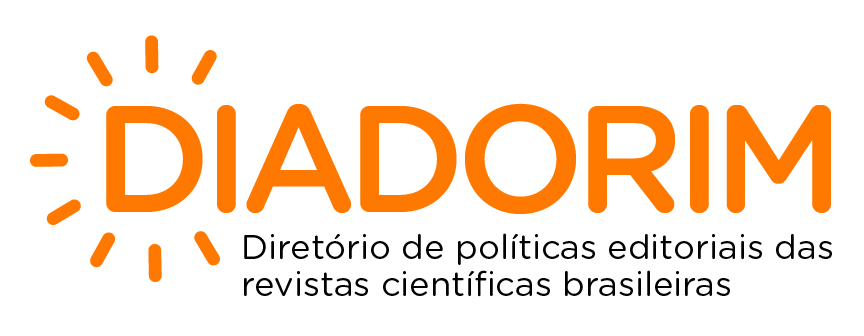Comparación de NDVI para dos diferentes especies de eucalipto
DOI:
https://doi.org/10.36812/pag.2016221/239-48Palavras-chave:
Teledetección, Índice de vegetación, Landsat 5Resumo
El estudio he llevado a cabo el análisis de la vegetación a partir de la dinámica del NDVI (Normalized Difference Vegetation Index) en Eucalyptus dunnii y Eucalyptus urograndis, comparando el NDVI generado a partir de los números digitales con el obtenido a partir de la conversión para reflectancia aparente. Para esto, se utilizó las imágenes del sensor TM/Landsat 5. La conversión de números digitales (ND) para los valores de reflectancia, así como el cálculo del NDVI se obtuvieron a través de operaciones de análisis de lenguaje espacial de Geoprocesamiento Algebraica (LEGAL). El análisis efectuado pone de manifiesto que los valores de NDVI generados a partir de las reflectancias son mayores que los determinados por los ND. Esta diferencia observada se justifica físicamente por las correcciones hechas a la imagen de algunos parámetros, como las radiancias mínima y máxima del sensor y la irradiancia solar estratosférica media. El E. dunnii presentó valores mayores de NDVI cuando comparado al E. urograndis, apuntando que esta es una herramienta útil cuando el objetivo es identificar las especies, facilitando el manejo del área.
Downloads
Referências
BASTIAANSSEN, W.et al. SEBAL -Surface Energy Balance Algorithms for Land: Advanced Training and UsersManual. Idaho: Idaho Department of Water Resources, 2002. 98p.
CAMARA, G. et al. SPRING: Integrating remote sensing and GIS by object-oriented data modelling. Computers & Graphics, 20: (3) 395-403, May-Jun 1996. DOI: https://doi.org/10.1016/0097-8493(96)00008-8
CHAVES, M.E.D. et al. Análise comparativado NDVI estimado a partir de valores de níveis digitais originais e de reflectâncias aparente e de superfície. In: XVI SIMPÓSIO BRASILEIRO DE SENSORIAMENTO REMOTO; 2013; Foz do Iguaçu. Anais...São José dos Campos: INPE; 2013. p. 8261-8268.
CHANDER, G. et al. Summary of current radiometric calibration coefficients for Landsat MSS, TM, ETM+, and EO-1 ALI sensors. Remote Sensing of Environment, 113, p. 893–903, 2009. DOI: https://doi.org/10.1016/j.rse.2009.01.007
EPIPHANIO, J.C.N. et al. Índices de vegetação no sensoriamento remoto da cultura do feijão. Pesquisa agropecuária brasileira, Brasilia, v. 31, n. 6, p.445-454, 1996.
ESQUERDO, J.C.D.M. Utilização de perfis multi-temporais do NDVI/AVHRR no acompanhamento da safra de soja no oeste do Paraná. Campinas: UNICAMP, 2007. 186 p. Tese (Doutorado em Engenharia Agrícola) –Faculdade de Engenharia Agrícola, Universidade Estadual de Campinas.
GLOBAL LAND COVER FACILITY. Global Land Cover Facility [home page]. Available at: <http://glcf.umiacs.umd.edu/index.shtml>. Acceso en: Dec. 2012.
HOLBEN, B.N. Characterization of maximum value composites from temporal AVHRR data. International Journal of Remote Sensing, v. 7, n. 11, p.1417-1434, 1986. DOI: https://doi.org/10.1080/01431168608948945
IBÁ –Indústria Brasileira de Árvores. Relatório IBA 2017. São Paulo. 2017
JENSEN, J.R. Sensoriamento Remoto do Ambiente: uma perspectiva em recursos terrestres. 1 ed. São José dos Campos: Parêntese; 2009. 604 p.
PESQ. AGROP. GAÚCHA, Porto Alegre, v.22, ns.1/2, p. 39-48, 2016
MARKHAM, B. L.; BARKER, J. L. Landsat MSS and TM Post-Calibration Dynamic Ranges, Exoatmospheric Reflectances and At-Satellite Temperatures. EOSAT Landsat Technical Notes, n. 1, 1986.
NATIONAL AERONAUTICS AND SPACE ADMINISTRATION (NASA). Landsat 5 (L5) Thematic Mapper (TM) calibration parameter files (CPFs). Disponível em: <http://landsat.usgs.gov/science_L5_cpf.php>.
PONZONI, F.J.; DOS SANTOS, S.B. Conversão de números digitais de imagens orbitais em valores de FRB de superfície. Boletim de Ciências Geodésicas, v. 14, n. 4, p.541-556, 2008.
PONZONI, F.J.; SHIMABUKURO, Y.E. Sensoriamento Remoto no Estudo da Vegetação. 1 ed. São Paulo: Parêntese; 2007. 144 p.
ROBINOVE, C.J. Computation with physical values from Landsat digital data. Photogrammetric Engineering and Remote Sensing, v. 48, n. 5, p.781–784, 1982.
ROUSE, J.W. et al. Monitoring vegetation systems in the Great Plains with ERTS. In THIRD EARTH RESOURCES TECHNOLOGY SATELLITE SYMPOSIUM, 3,1973; Washington, USA. Anais... Washington: NASA, 1973. p.309-317.
Downloads
Publicado
Como Citar
Edição
Seção
Licença
Os autores declaram que o trabalho não foi publicado anteriormente, nem enviado simultaneamente para publicação em outro periódico e que concordam com a submissão, conteúdo e transferência dos direitos de publicação do artigo em questão para o periódico científico Pesquisa Agropecuária Gaúcha - PAG. Os autores assumem total responsabilidade pela originalidade do artigo, podendo incidir sobre os mesmos, eventuais encargos decorrentes de reivindicação, por parte de terceiros, em relação à autoria do artigo.
A reprodução total dos artigos da Revista em outros meios de comunicação eletrônicos de uso livre é permitida de acordo com a licença Creative Commons Atribuição-NãoComercial-CompartilhaIgual 4.0 Internacional.




















